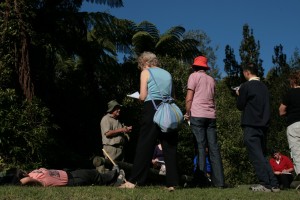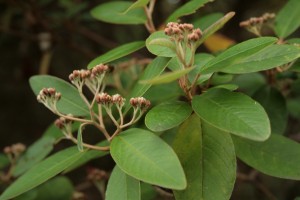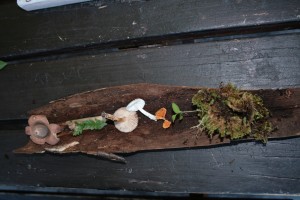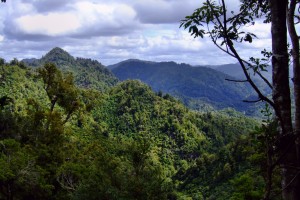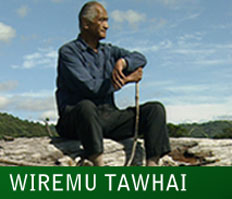New Zealand Association of Medical Herbalists AGM Conference; 29-30th May 2010
Paper presented by Rob McGowan
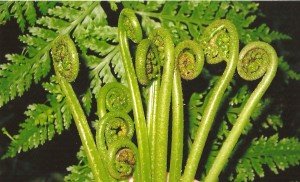 Growing the connection between Rongoa Maori, traditional Maori medicine and New Zealand herbal medicine.
Growing the connection between Rongoa Maori, traditional Maori medicine and New Zealand herbal medicine.
Some years ago it seemed to me that one of the big challenges facing New Zealand herbalists was to learn to incorporate New Zealand plants into their practice. In my understanding of traditional medicine one of the key principles is to use what the land provides. Time and time again I have heard traditional healers from many cultures insist that everything one might need to be well was around you.
That seems very sensible and practical, yet not to many years ago it seemed that the majority of New Zealand herbalists used only plant material from species that belonged to other lands outside of New Zealand. Even those herbalists who made their own preparations used species exotic to New Zealand. What made that even more difficult to understand was that some species that were very much used were threatened with extinction, sometimes caused by over harvesting, even though in some cases there are effective alternatives readily available amongst New Zealand’s indigenous flora. A further factor was that it was also, and remains, often difficult to source from overseas, good quality material, even for more common species
That was the situation not many years ago. There has been solid progress made in addressing that challenge in recent years. There is a much greater awareness and understanding of New Zealand native plants and their medicinal uses, and this is gradually finding expression in New Zealand herbal medicine. Furthermore more and more people are on the journey of learning about rongoa Maori, traditional Maori medicine.
However there is a difference between traditional Maori medicine and plants used traditionally by Maori for medicine. The focus is very much on the latter, on the plants traditionally used, their properties, preparation and uses, rather than the whole complex of knowledge and practice which is at the basis of rongoa Maori. Sometimes there is much enthusiasm for learning the traditional uses of plants, but much less for the tikanga – the protocols and practices surrounding those uses.
That is understandable, given the cultural differences between peoples, and the practical nature of herbal practices, focused as it is on providing healing and comfort to people. But the focus of traditional medicine, regardless of culture, is the healing of people, not just the healing of the sicknesses that may trouble them at a particular point in time, and this happens within the context of the community in which the patient lives and belongs. It is within this broader context that is found the foundation of traditional medicine, not just in New Zealand, and it is this broader context that to me is most urgently in need of attention.
Wai 262:
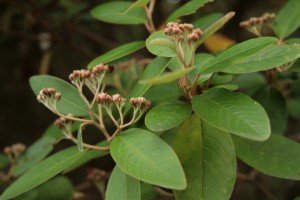 That does not appear to be happening at the moment. There is much attention on the commercial possibilities of plants used traditionally as medicines. Again that is not confined to New Zealand. Even Wai 262, the Flora and Fauna Claim at present being considered by the Waitangi Tribunal, to a large extent focuses on ensuring that the commercial potential of New Zealand’s flora and fauna is not captured by non Maori, and non New Zealand commercial entities, to the detriment of Maori and New Zealanders as a whole. The feeling is that Maori, like most indigenous peoples who have been colonized, have lost much or most of their resources to the extent that they no longer are able to provide for themselves a reasonable standard of living, and that it is critical that they secure effective control over what little remains.
That does not appear to be happening at the moment. There is much attention on the commercial possibilities of plants used traditionally as medicines. Again that is not confined to New Zealand. Even Wai 262, the Flora and Fauna Claim at present being considered by the Waitangi Tribunal, to a large extent focuses on ensuring that the commercial potential of New Zealand’s flora and fauna is not captured by non Maori, and non New Zealand commercial entities, to the detriment of Maori and New Zealanders as a whole. The feeling is that Maori, like most indigenous peoples who have been colonized, have lost much or most of their resources to the extent that they no longer are able to provide for themselves a reasonable standard of living, and that it is critical that they secure effective control over what little remains.
Much of the discussion, and much of the draft response from those acting on behalf of the Crown, focuses on Intellectual Property Rights and finding a pathway through the intricacies of commercial law to ensure that the concerns of the Treaty claimants are met in a fair and practical way. It is worth noting that the Wai 262 claim is likely to provide a significant contribution internationally, to the development of law surrounding the Intellectual Property rights of indigenous peoples.
However I think that in focusing on Intellectual Property rights both the claimants and the Crown are paying insufficient attention to an even more important dimension. That dimension is not about ownership but kaitiakitanga, guardianship (that in itself an inadequate translation but sufficient for now). The major health crises facing the human race is not the plethora of diseases that inundate the world’s medical resources but the health of the planet itself.
How can we expect to be healthy when the world itself is increasingly unhealthy; when the water we drink needs to be made safe by the use of chemicals that in themselves contribute to the decline of health, when the air we breath is far from pure, when the soils in which we grow our foods are increasingly demineralised and lack many of the nutrients we need, and even the best of foods, because of the contamination of groundwaters and rainwaters as a result of human activity, is laced with a mix of chemicals that in time, can erode health. The concern of the kaumatua behind Wai 262 was not so much the danger of losing commercial opportunities, but the damage that commercial exploitation can do to New Zealand’s flora and fauna.
The first patient for the traditional healer is to heal the land itself. It is interesting that so many traditional cultures regard the earth as Mother; in the Western World we talk about “Mother Earth”. Maori refer to her as Papatuanuku, and is at the beginning of all whakapapa/genealogies. If the Earth is healthy and well, she can care for us, can provide for us, can keep us well.
The biggest concern of the Wai 262 claimants is not that other peoples may reap the benefits from exploiting the flora and fauna of Aotearoa, but that they will damage those taonga, the treasures that our land provides, to the extent that they will lose their power to keep us well. It is easy to see that a mine or a hydro scheme can devastate a landscape; to Maori the commercial exploitation of living creatures, be they plant or animal, and in this we can include people, has a similar, if less visible effect. It fundamentally damages their Mauri, their gift of life, and in doing so compromises their ability to share that gift, to give health and healing. That is no fantasy; there are ample scientific tests that demonstrate that modern cultivars developed for industrial scale horticulture, have often lost many of the micronutrients so important for good health.
I think that if we really want to learn about traditional Maori medicine and incorporate it into our practice, we need to ask fewer questions and listen much more carefully. Often elders are unwilling to share their knowledge because they fear that others will use their knowledge without the care and respect to ensure its integrity, and the wellbeing of the taonga we look to use. We are so good at asking questions about what we want to know; often our elders would rather spend their failing time and energy in telling us what we need to know. When it comes to research often we much older people have not yet shed the ways of teenagers.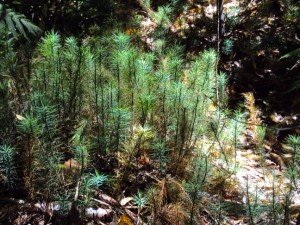
I remember very clearly many years ago meeting a kaumatua in Whanganui who was said to be an expert on rongoa Maori. He was exactly the sort of person I was most anxious to talk to, and quickly started asking him about some of the plants about us at the time. He very smartly told me that he had mostly given up using plants and that his focus was actually on taha wairua. I was greatly disappointed, particularly because I had been given the same answer a number of times already by different kaumatua along the Whanganui River. It wasn’t just because I was a priest at the time, and was expected to be more able to focus on the spiritual dimensions involved in healing; it was how they actually saw things; the source of illness, and healing begins at a much deeper level than the physical. That was more than 30 years ago. It has taken me much of the intervening time to slowly realize that in fact the foundation of rongoa Maori was not rakau – trees and plants, but wairua, something much deeper more comprehensive.
What I hope to do over the next few moments is explain something of what that means, and how that can contribute to developing the theme of this presentation “Growing the connection between Rongoa Maori, traditional Maori medicine and New Zealand herbal medicine”. What is needed is some insights into the traditional Maori understanding of health and healing, and then how traditionally that was achieved.
Rongoa Maori wananga:
Over the last nearly twenty years I have run many hundreds of workshops and wananga on rongoa Maori. Rather than try and give you a list of definitions and terms that are used I thought it might be easier to walk you through the programme for such a workshop as a way of illustrating some of the key points that would be helpful in addressing the topic.
Every wananga begins with karakia; that is obvious; that is how wananga always begin. We are becoming well used to karakia in New Zealand these days; every time something special happens, an opening of a new public building, a conference, a new beginning, a disaster, and so on, a kaumatua is brought along so say a karakia. People usually stand in respectful silence, often wondering what it is all about, and hoping that it doesn’t carry on for too long. However it is much more than just a ceremony.
Much could be said; the following comments focus on the place of karakia in healing.
The first reason for a karakia at the beginning of a wananga, or anything important, is to clear the way. We are busy people, and our minds are usually full of whole range of important business so it is hard at times to fully concentrate on the matter at hand. When it comes to health and healing it doesn’t pay to be distracted. The karakia is the time to collect your thoughts, to focus on what you are doing and why. It is not just things that we have in mind; it also is a matter of acknowledging our tiredness, grumpiness, lack of confidence, disappointments that bother us, anything negative that might hinder our ability to do what we have set out to do.
That in itself is not just to clear our minds, it is also to protect us. Often when dealing
with illness we have to contend with a lot of negative feelings, from the patient, from family and friends of the patient, other health professionals. Sometimes it is peoples’ expectations; nothing less than a miracle will suffice. That sort of negativity can disempower us, and if we haven’t taken time to prepare ourselves carefully it can be very draining, to say the least, and impede our ability to help.
The purpose of a karakia is to clear those things from us so that we are able to do the best we are capable of.
The words used are not important. We use our own words, language, not somebody else’s. Sometimes words are not needed at all; just a quiet time within ourselves. We draw on our own beliefs, our own traditions, our own practices – our tikanga, the way we have been taught to go about things. We remember the people who have taught us, inspired us, given us our values, our knowledge, and bring them with us. We draw on the knowledge and wisdom they have given us, not just our own. Sometimes the most significant part of a karakia is the quietness; we hear the sounds of the forest, the birds, the water, the wind. In the stillness is found the beginning of the healing.
Having taken the time to begin with karakia the next step of the wananga is to focus on the plants themselves.
There was a time in New Zealand when most people lived close to the natural world of the forest and lots of people had a good knowledge of the trees and plants, and everything else that lived there. Those days have gone; most people enjoy the ngahere, the forest, but in fact know very little about it. There was a time when people depended on what the forest could provide for day to day necessities; food, water, medicine, shelter, safety, firewood, and as a result had a very broad and very deep knowledge of its life and energy. These days we go there for bush walks, to relax, recharge, find inspiration, but not so many people know just about every tree and plant, not just as a species, but as a family member, nga uri of Tane Mahuta, fellow children of Tane. I was told at the very beginning of my journey to learn rongoa Maori that nobody needed to tell me anything about the trees and plants; all I had to do was to get to know them and they would tell me everything I needed to know. That sounded rather discouraging at the time, but once again it proved to be the case.
Before people start to learn about the medicinal properties of the trees and plants of the forest they need to get to know the trees themselves. That means much more than identifying them and knowing where to find them. It means getting to know them in their relationship to the rest of the forest, not just other trees and plants, but the birds and insects, the sun and moon, the earth itself and the water that gives it life, and ourselves; we too are part of Tane’s family.
People also need to learn to see themselves as part of that web of connections. One of the major causes of ill health in the modern world is that we have lost an awareness of our connections, our belonging to the earth and sky, and all that draws life from that. How else can the destruction the human race has wrought on the environment be explained? How can we ever heal the world until we come to relearn that we are in fact part of it?
The next stage in the wananga then is to help people to learn about the plants, not just the ones that will prove to be useful for their medicinal or other properties, but all the plants. We need to do this to be sure that we have collected the ones we are looking for. First we must get to know their names, just like we are getting to know the names of so many people at this conference whom we have met for the first time. Most plants have lots of names, traditional names, botanical names, common names, story names and the associations that help us to remember them, just like people. That can be a bewildering experience to begin with, but not an unachievable challenge. We can learn anything if we want to, and believe enough in ourselves.
Having been introduced to the trees and plants, like getting to know a new friend, it is important to spend time with them. The venue for these wananga is not in a class room, but the bush itself. It is only when you really get to know the bush that we can begin to realize that even that is far from well. So many of the plants that were once so common have almost disappeared, thanks to the impact of animals, not just pest animals but domestic stock as well, and the invasion of hundreds of exotic weed species. Most of the plants used traditionally by Maori for medicine are found in the regenerating fringe of the forest where they are readily eaten by animals and quickly displaced by more aggressive pest species. The use of rongoa Maori is declining because the bush itself is in decline.
In using New Zealand plants in our practice we need to be mindful that even these may not be easy to obtain, and we must help address that.
In the past the rangatahi, the up and coming generation, were sent by their kaumatua /elders into the forest to learn to be orators; the beauty of their speech to be compared to the songs of the birds of the forest. Now the forest is a place of silence and emptiness, no sound but the wind soothing its way through bare branches, not even the flowers to adorn them. The sub canopy growth, seedlings, shrubs, ferns, mosses, often has disappeared completely. Even the giant trees struggle to survive, no longer nourished and nursed by the many layers of growth once shaded by their outstretched branches.
Taha Wairua:
That all sounds very dramatic, even though we have heard that sort of talk so often that we have almost become immune to it. But isn’t much of our time as practitioners spent treating the illnesses that are directly caused by the environment we have created? We try to counteract the effects of industrialized food and contaminated water, in people who are so stressed by the pressures of modern living that they are dominated by their excesses, food, drink, play, work, worry. We live in a world full of people who claim their rights yet forget their responsibilities and wonder why there is not enough to go around.
The answers are not going to be found in the better use of plant medicine, plants can’t heal the emptiness and loneliness, the uncertainty, the self doubt, the sense of disappointment that so many people feel. The problems are much more fundamental than that. That’s why we need to look beyond the traditional use of plants for medicine to a fuller understanding the basis of traditional Maori medicine.
At the beginning of this paper I repeated what I have been told so often, the basis of traditional Maori medicine is not rakau, trees and plants, but taha wairua. Health is not about medications, however prepared, or how effective; it is about who we are and where we belong to the world. It is about the world of connections of which we are a part, it is about that sense of belonging, knowing that we belong, and where we belong. It is about restoring and maintaining the balance that enables life to thrive. We are not the kings of creation, the glorious end achievement of the long process of evolution; we are unique, we are a treasure, a marvel, but still only one marvel in a much greater marvel, the world of creation.
The focus of the traditional Maori understanding of the environment is on that interconnection; it is expressed in whakapapa, which begins with Tane Nui a Rangi and Papatuanuku, to Tanemahuta and their many other children, and through them to all living creatures. Certainly there is conflict in that world; Tawhirimatea lashing the children of Tane with the force of his wind, and Ruamoko shaking the earth, but it is all within the family, and it is a matter of maintaining a state of balance so that the connections that bind creation are strong and sustaining.
Human kind are descended from Tane; in terms of the whakapapa we are in fact the teina, even more, the potiki, the most junior of his descendents. One of the key rules of the Maori world is to always respect one’s seniors; not to do so brings about disharmony and even conflict. It could be said that the devastation that is happening in terms of human impact on the environment is a direct result of this rule being overlooked. We have acted as if we were owners of the world’s resources, and taken without asking, taken much more than we were ever entitled to. We are beginning to pay the cost.
This sense of belonging, or connection, finds expression in the way rongoa is harvested and prepared. Traditionally healers have a real relationship with the trees and plants they harvest for rongoa; they never harvest without preparing themselves properly, and ask permission before they start to harvest. They harvest with care and respect, taking only what they need at the time. Anything that is harvested is, after use, returned to the land.
The healing is not only the physical or chemical properties that the plant may contain; they may be important, but more important is connection between the Mauri of the plant, and that of the healer, and the patient for whom the rongoa is destined for. One could describe the Mauri as the “gift of life”. It is much more than a physical reality; there is an energy involved, something much more than physical; it is this that empowers the healing.
This is something that needs to be seriously considered in terms of growing the connection between Rongoa Maori, traditional Maori medicine and New Zealand herbal medicine. Kaumatua are often wary of entrusting their knowledge to others because they are not certain that others will treasure the knowledge and treat it with the respect it requires in order for it to live and share its gift.
Modern herbal medicine happens in a busy world full of many pressures. Too often most of the herbs dispensed are prepared on an industrial scale; the mass production that is necessary to meet the demand of the market means there may be little space for the protocols, tikanga, required by traditional practice.
That passes through to the busy herbalist working in a dispensary. How often do people proscribe herbs that they have never seen let alone harvested for themselves. There is often no real connection between the herbs and the practitioner, other than the training they have received and experience they have developed. This may seem to be all that is necessary; they have the professional skills. However traditional healers might say that this is not “safe practice”, that in working this way not only do patients not receive the best of treatment but the practitioners themselves may in fact be putting themselves at risk. Even herbalists suffer burnout, become disillusioned, become so committed to setting up a successful practice that they lose sight of the values and goals that first drew them to their profession.
In this very busy world, in this world where the places in which we live are becoming so unhealthy, it is critical that those who work with traditional medicines, retain their earth connection and the values that come from it. It may turn out that the greatest contribution that medical herbalist makes to their patients is not the wonderful medicines they prescribe, but reconnecting people back to the earth, the source of life itself.
In a practical sense that means getting out and getting to know the plants you use; walk in the bush, grow herbs in your garden, live as much as you can from what you grow yourself. Not only is that a very good way to de-stress, but in fact it will enrich your healing. Of course you will have to make use of the excellent products that are now available; but you won’t be dealing with strangers. Your herbs are your family, you know them and you care for them. When you prepare a medicine with them you will be sharing their mauri, not just their chemistry.
Herbalists with this sort of background connect to traditional healers much more easily; there is a very real connection which is quickly recognized. It is through that sort of connection that we start to learn.
There is much to learn about traditional Maori medicine, other than the plants themselves. The meaning of such concepts as “tapu and noa”, “mana’, “taha wairua” are all important in coming to understand rongoa Maori. They are not barriers, as they are often depicted, but boundaries, to ensure safe practice. They help to restore and enable the balance, the strength of connections that are all necessary that a person may be well, and to ensure that the healer is kept safe and well..
We live in a world that is obsessed with its technology and biochemistry. Health care has become one of the major industries of the world and is dominated by multinational businesses that make many people wealthy. They fund research, and even though they have brought major benefits to very many people they also work to ensure that nobody or nothing can in any way jeopardize their profitability. Its proponents regard themselves as the leaders in healthcare and tend to belittle traditional medicines as being primitive and less capable, an anachronism that no longer has a place.
We have largely bought into that thinking and spend too much of our time and energy in trying to find a little space to enable us to continue to survive. The battle over the ANZTGA and now the new proposal being promoted by Government are examples of that. We need to stop doing that. We are the mainstream medicine; more people in the world use only traditional medicines than will ever use, or be able to afford, pharmaceutical medicines, which increasingly are available only to the wealthy.
We are not just talking about the medicines that can be made from natural products – even those are becoming available only to those who can afford them. We are talking about the whole understanding, the whole set of values and beliefs that underpin traditional medicine, the sense of belonging to the world, the belief that the Earth is the Mother of us all, the right of each person to uphold their mana and to be treated with respect; the practice of using with care, and the willingness to share, and always returning to the Earth that which comes from the earth. These are all fundamental to the Maori understanding of health and healing; they are fundamental to very many traditional cultures. We need to rediscover them, remind ourselves of them, and give them full expression in the way we live and practice. We need to be uncompromising in our determination to do so.
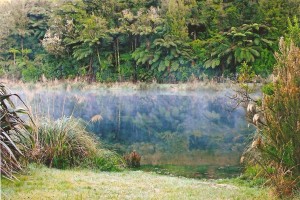 The answer to the growing problems that our planet faces will not be found in technology, or the wizardry of the modern computer backed scientist. The answer is to be found in the teachings of our ancestors. We need to learn again to care for the Earth. Care for the Earth, our Mother, and she will be able to care for us.
The answer to the growing problems that our planet faces will not be found in technology, or the wizardry of the modern computer backed scientist. The answer is to be found in the teachings of our ancestors. We need to learn again to care for the Earth. Care for the Earth, our Mother, and she will be able to care for us.





